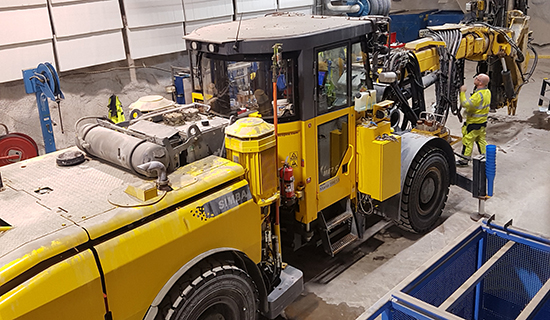Theme: International Women's Day
Today, March 8, International Women's Day recognizes women's social, economic, cultural and political success - while highlighting the importance of women's solidarity and increased equality.
Boliden's long-term focus is that the composition of employees should reflect the communities in which we operate. Diversity and equal opportunity lead to sustainability, dynamism, creativity and, ultimately, to greater profitability. Boliden endeavours, therefore, to ensure its workforce is made up of people with different backgrounds, ages and experiences. Boliden's goal for 2018 was for 20% of its workforce to comprise women. The result was 18,2% (17.6), which corresponded to an increase during the year, even though the goal was not achieved in full. It is worth noting that a more even gender distribution has been achieved amongs senior management personnel, including amongst Boliden's so-called top 100 managers, where the percentage of female employees is 25% (23). Three out of the eleven mines and smelters are led by women, and Boliden's Group management are led by two women and three men.
Last year we interviewed three women colleagues within Boliden who shared how they were attracted to the company, what development there has been and what is required to achieve increased equality and diversity. Read that article here.
Women power in Garpenberg
On a lighter note, we are republishing here an article from our staff magazine in 2018 in which we turned our attention to Garpenberg where the machines that work underground at Garpenberg have been given feminine names. This came about because the operators were having difficulty telling their machines apart, all of which had impersonal serial numbers.
"Then we stumbled upon the idea that we'd be able to tell them apart more easily if we gave them feminine names," explains Andreas Werner, who is one of those responsible for mobile machine maintenance at Garpenberg. Andreas is also considered to be behind the personification initiative.
The idea comes originally from tunnelling, where it is common to give machines feminine names.
It is predominantly the drill rigs at Garpenberg that have been renamed, with the names being inspired by women with close ties to the operators or who are otherwise well known. The drill rig Barbro was named after popular Swedish performer Barbro 'Lill-Babs' Svensson. The rig christened Elin is named after Andreas's daughter, who was born around the same time as the rig was installed. "My mother-in-law was moved to tears when I told her," recalls Andreas.
Also represented among the names are younger members of the Swedish royal family.
This tradition goes back about a decade, and there are now 16 'female' drill rigs at Garpenberg. You could perhaps view these machines as a tribute to all strong women, mothers, daughters and girlfriends everywhere.

The Atlas Copco Simba ME7C drill rig, a.k.a. Maria. Photo: Jan Kläre
Trivia: female myths and legends
Stories about mine nymphs are common in Swedish folklore. People used to believe that there was a lake nymph in every lake, a wood nymph in every wood, and a mountain nymph on every mountain.It is the mountain nymph, also known as a mine nymph, who owns the ore and so decides when the time is right for mining. The mine nymph watches over work at the mine and raises an alarm if she notices that something isn't right. She can also punish those who are not doing their work properly. Mine nymphs like there to be order in the mine and do not like whistling, swearing or noise. In many mines, miners used to tap on the rock and politely say good morning when they reached the rock face.
Those who have seen a mine nymph say that she is always very beautifully dressed. When she is wearing light-coloured clothes it means that everything is well in the mine, but black clothes signify danger. Mine nymphs have saved the lives of many a miner by appearing in black clothes shortly before an accident or a rock fall. The miners have then rushed up from the mine, but those who have not heeded her warning have fared less well.
Boats too have often been named after women, and the most common boat name in the West is believed to be Maria. Boats in our part of the world tend usually to have feminine names rather thanmasculine ones, not including warships and tugs. One theory compares being ona boat on a stormy sea to the security of the womb, as only women can bear life, making the analogy of their ship to a woman.